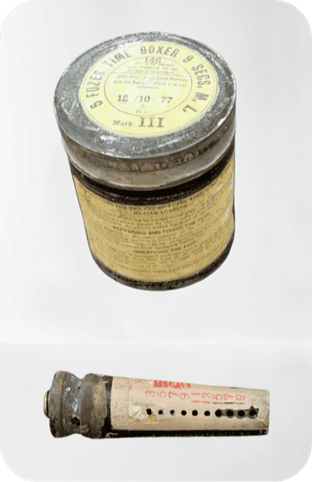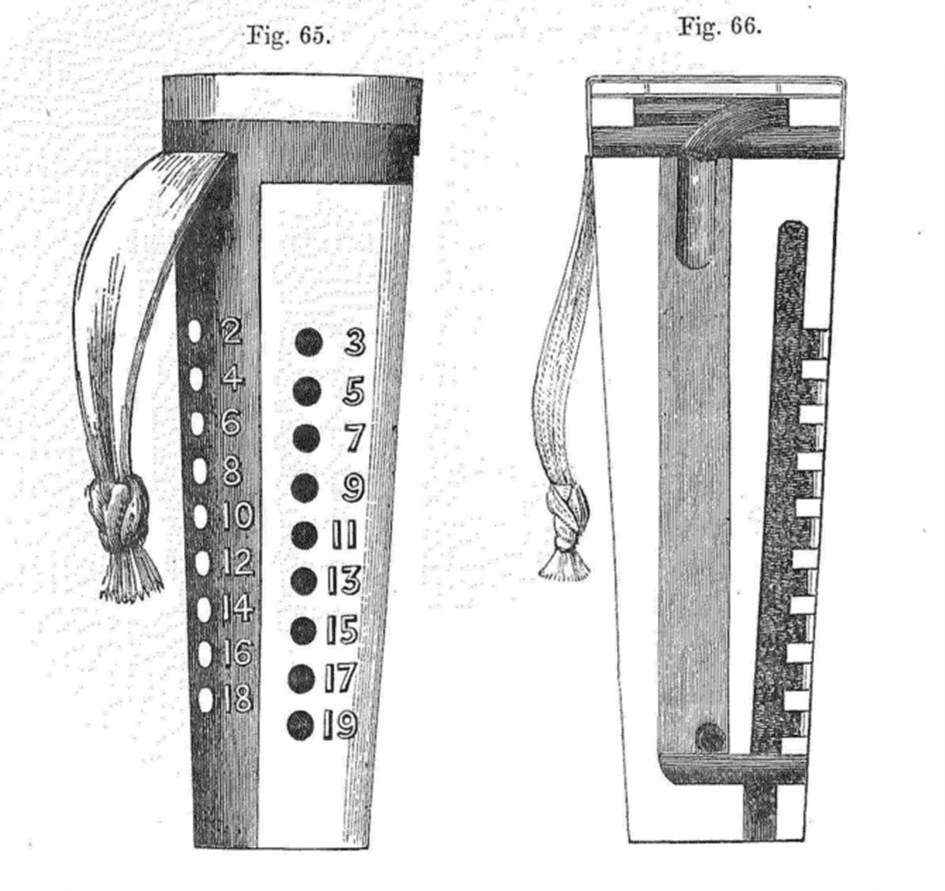The Boxer Time Fuse
Fuses may not be the first artifacts visitors expect to see in a museum, but they deserve our attention and appreciation.
In a modest display case, we showcase four boxer time fuses with their original manufacturer’s tin, dated 13 October 1877. One of the boxer fuses is displayed openly, while the remaining three are stored in the well-preserved container manufactured by the Royal Laboratory in Woolwich, England. The four fuses are crafted from wood, marked as inert, and originate from the same production lot, bearing sequential numbers. The top of the tin is inscribed with “5 Fuses Time Boxer 9 Secs ML,” indicating their intended use for muzzle-loading smoothbore artillery, such as the 6-pounder and 9-pounder.
At Confederation in 1867, the Canadian Artillery deployed smoothbore artillery with two main types of fuses: time and percussion. The predominant time-delay fuse was the boxer fuse, invented by Colonel Boxer of the British Artillery in 1853. The boxer fuse was the first reliable powder-burning, dual-channel time fuse for explosive and shrapnel shells. Before this, fuses were simple devices that allowed a spark or flame to reach an explosive charge at uncertain intervals. Boxer fuses were particularly advantageous due to their reliability, adjustability, and ease of use.

These boxer fuses are shaped like cones and have a central powder channel. They burn at a consistent rate of five seconds per inch, correlating the burn length with the shell’s flight time. By introducing multiple boring holes, the fuse could be adjusted to burn at specific intervals rather than adhering to a fixed duration seen in earlier fuses. The museum artifacts are preset to burn for 9 seconds before igniting the shell’s bursting charge. These four boxer fuses are designated Mark III, suitable for coastal, field, and garrison artillery, and for naval if no Mark I fuses are available.

To ensure the boxer fuses remain effective and in good condition, the tin is marked with a directive stating: “not to be opened until required for use or special inspection.” The tin contains instructions for deploying the fuse, catering to gunners unfamiliar with its operation. To prepare the fuse, it must be “secured as firmly as possible within the shell,” which may necessitate several strikes with a wooden mallet or against a limber box in the field. Before usage, the fuse should be uncapped and inserted, with the shell, into the gun’s bore. This involves exposing the primer and unwinding the band from left to right, ensuring the metal plug is detached from the fuse.
The instructions indicate the fuse: “Ignites through the flame of the exploded charge, which travels through the windage and ignites the primer quick match located in the groove surrounding it.” The fuse ignites from the explosion’s flame, the fuse and shell travel through the air, and the fuse ignites the shell’s bursting charge at a predetermined time interval. An ingenious payload delivery system that maximized the destructive potential of the shell. The boxer fuse introduced a groundbreaking design that significantly enhanced the effectiveness of smoothbore and rifled artillery during the latter half of the 19th century.
By Andrew Oakden
